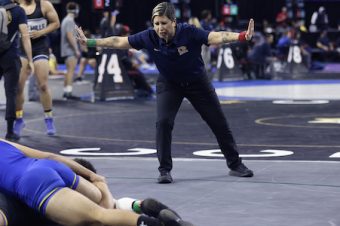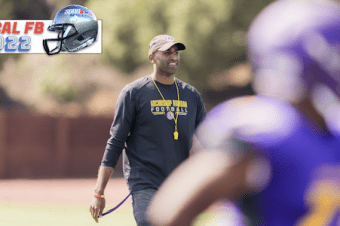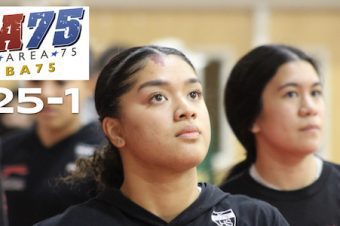HEALTH WATCH: Attention to details will help prevent back injuries
CalHiSports Insights February 22, 2012 SportStars 0
By Judy Pang
Low back pain (LBP) is a frequent complaint among young athletes. Spinal structural differences, muscular imbalances, decreased flexibility and poor body mechanics may predispose an adolescent to LBP. Repetitive motion and loading of the spine in sports can put the back at risk for overuse. Common injuries range from a simple muscle strain to a fracture in the bones and compression of the discs.
Non-specific LBP affects 60-75 percent of children. Maintaining the natural curves of the spine during activities is imperative. If the natural curves are compromised, the core muscles have to work harder to support the spine, resulting in muscle strains.
Spondylolysis is another common back injury among young athletes. It is a fracture in the spinal bone due to repetitive twisting and over-arching. Sports at risk for this injury include gymnastics, volleyball, football and cheerleading. Symptoms include low back or buttock pain that increases with backward bending.
It is critical to seek treatment before the fracture gets too severe, causing the vertebra to break off and slip forward, resulting in a spondylolisthesis. Slippage usually occurs during a growth spurt, and is rarely due to trauma. Rest is recommended until the athlete is able to move the spine in all directions without pain. An exercise program focusing on flexibility, proper body mechanics and core strength should be implemented. Surgical treatment may be required if persistent pain or nerve involvement occurs.
Here are some areas to focus on to help avoid these back injuries.
Flexibility
During a growth spurt, bones may grow faster than the muscles and ligaments, causing muscle imbalances and pathologic tightness. Stretching the muscles in the back, hips and hamstrings may help reduce the risk of a low back injury.
Proper body mechanics
Modification of activity, correct posture and body mechanics with movement is necessary to reduce overall stress on the back. Each movement of the lumbar spine should be accompanied by core activation to help support the back.
Core Strengthening
The core muscles, which include the abdominals, back and hip muscles, need to be strengthened to maintain postural control, provide a base of stability, reduce loads on the spine and to facilitate movement in the arms and legs.
Begin core exercises in a controlled, gradual and progressive manner. Common core strengthening exercises include bridges, planks, clamshells and mini-squats. Each exercise may be progressed by changing the plane of movement, the firmness of the surface, the amount of time, resistance and/or speed.
Core stabilization will not only help prevent LBP, but it will also improve athletic performance. Several studies have shown improved vertical jumping and sprinting after a core stabilization program. A regular routine of low back exercises with an emphasis on flexibility and core strengthening will help athletes avoid stiffness and core weakness, aiding in the prevention of LBP and enhancing athletic performance.
Judy Pang is a physical therapist intern at Children’s Hospital in Oakland. If you have any questions or comments regarding the “Health Watch” column, write the Sports Medicine for Young Athletes staff at Health@SportStarsOnline.com.
SportStars
SportStars Magazine: High School Sports Articles Online SportStars is your go-to source for the very best high school sports articles in California. Player and team profiles, game coverage, health and fitness tips and the largest Camps, Clinics & Combine resource for athletes. We're the story behind the stats.










No comments so far.
Be first to leave comment below.